One of the most frequent reasons for painting restoration is discolouration of the surface. Whilst there are many factors that can lead to a dark or distorted appearance, fireplace smoke is often involved. Over the course of their life, historic artworks have usually been in one or more locations with an open fire. Historic interiors were far more prone to soot and airborne contamination being present in the atmosphere. Therefore, much of the dark discoloration on a painting’s surface could have been built up over decades or even centuries.
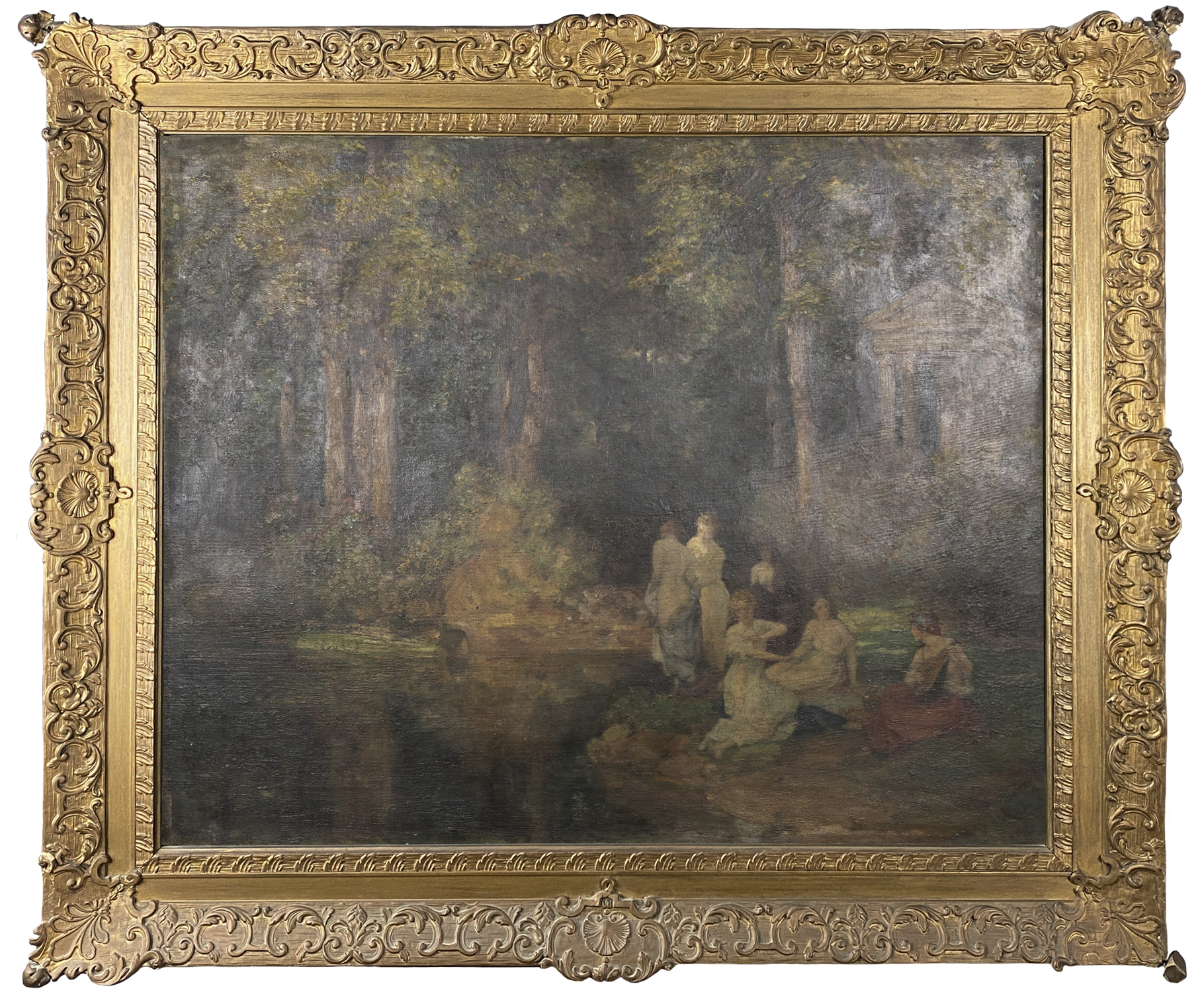
This was the case with a beautiful late 19th century oil painting that was recently cared for by our conservator Hayley. After spending many years hanging near a coal fire, the bright colours and vividity of the piece were completely subdued. This discolouration did not only affect the visual quality of the work, but also its monetary value. During the course of its treatment, the painting was also found to have some interesting aspects that were only visible through UV light.
 Above: a detail from the painting before and after surface cleaning and varnish removal
Above: a detail from the painting before and after surface cleaning and varnish removal
Valuation and artist indication
When we are approached for painting conservation, one of the biggest questions is whether the value will be affected and whether an artist can be determined. Whilst every case is different depending on the style and popularity of a painting, this piece was a great example of how restoration could achieve a higher auction value.
We approached our colleagues at Chiswick auctions about this painting on behalf of our client. Their expert immediately determined that it could be the work of Talbot Hughes, a romantic artist who focused on classical and historical subjects in his work, reminiscent of the pre-raphaelites. This was further established by a signature in the lower left corner – this became more visible following conservation work due to the removal of the darkened surface and varnish layers.
 Above: the signature of Talbot Hughes before and after restoration
Above: the signature of Talbot Hughes before and after restoration
Whilst our conservators cannot retouch or alter a signature, we often find that the removal of contamination from the surface can reveal features that have been hidden for decades. This not only helps with securing a valuation but further establishes provenance prior to a sale.
 Above: the full painting before and after conservation treatments by our conservator
Above: the full painting before and after conservation treatments by our conservator
The valuation in the painting’s condition prior to conservation treatments was £1200 to £1800 but following restoration it was valued at £2000 to £3000. This reflects the fact that the painting would be in a more presentable and appealing condition, but also that the costs associated with restoration had already been covered before the sale, allowing it to be sold in its best condition.
Artwork themes
Whilst much of Talbot Hughes’ work is figurative, this oil sketch has allowed him to focus on the composition of an idyllic wooded landscape to frame the scene. Including historical or mythological figures in the foreground of a landscape has been popular since the 16th century. Often it allowed for a landscape painter to elevate their work by including a deeply academic topic through hints to classical mythology or philosophical idylls.
 Above: a detail from the painting following restoration work
Above: a detail from the painting following restoration work
Fatal beauty is a well known theme for artists of all genres, the inclusion of classically dressed bathers in this painting allows it to fall into this category. Hints to ancient civilisation turn what is ultimately a voyeuristic portrayal of women into a scene that could be from a variety of historically important literature with allegorical undertones.
The most popular story that this painting could be alluding to is from Ovid’s Metamorphoses, in which a young hunter called Actaeon comes across the goddess Artemis and her nymphs bathing. Artemis was a chaste goddess and therefore very displeased with his viewing of her nude. As she splashes Actaeon with water he turns into a stag, his own hunting dogs then hunt him down – in other versions, Artemis hunts him down herself. In this painting it is possible that the viewer is Acteon, observing the bathing Diana who is about to bring about his demise.
The inclusion of a temple in the background further compels this classical idea. We can imagine that the woman at the forefront of the group is Artemis, caught moments before she disrobes, whilst a cloaked figure stands behind her, reminiscent of one of The Fates.
 Above: a detail of the figures before and after restoration by our conservator
Above: a detail of the figures before and after restoration by our conservator
Ultra-Violet discoveries
Our conservators take high resolution photographs of an artwork before and after conservation treatments take place. These are produced under ultra-violet light as well as normal lighting. Ultraviolet fluorescence photography (UVf) is used by conservators to aid identification of different materials present.
Different materials appear differently under UV light, some absorb the UV and look dark, whilst others have a bright fluorescence and some even change colour. An example of this is non-original retouching or overpaint which can look very dark on top of a fluorescent varnish layer, allowing our conservators to identify it.
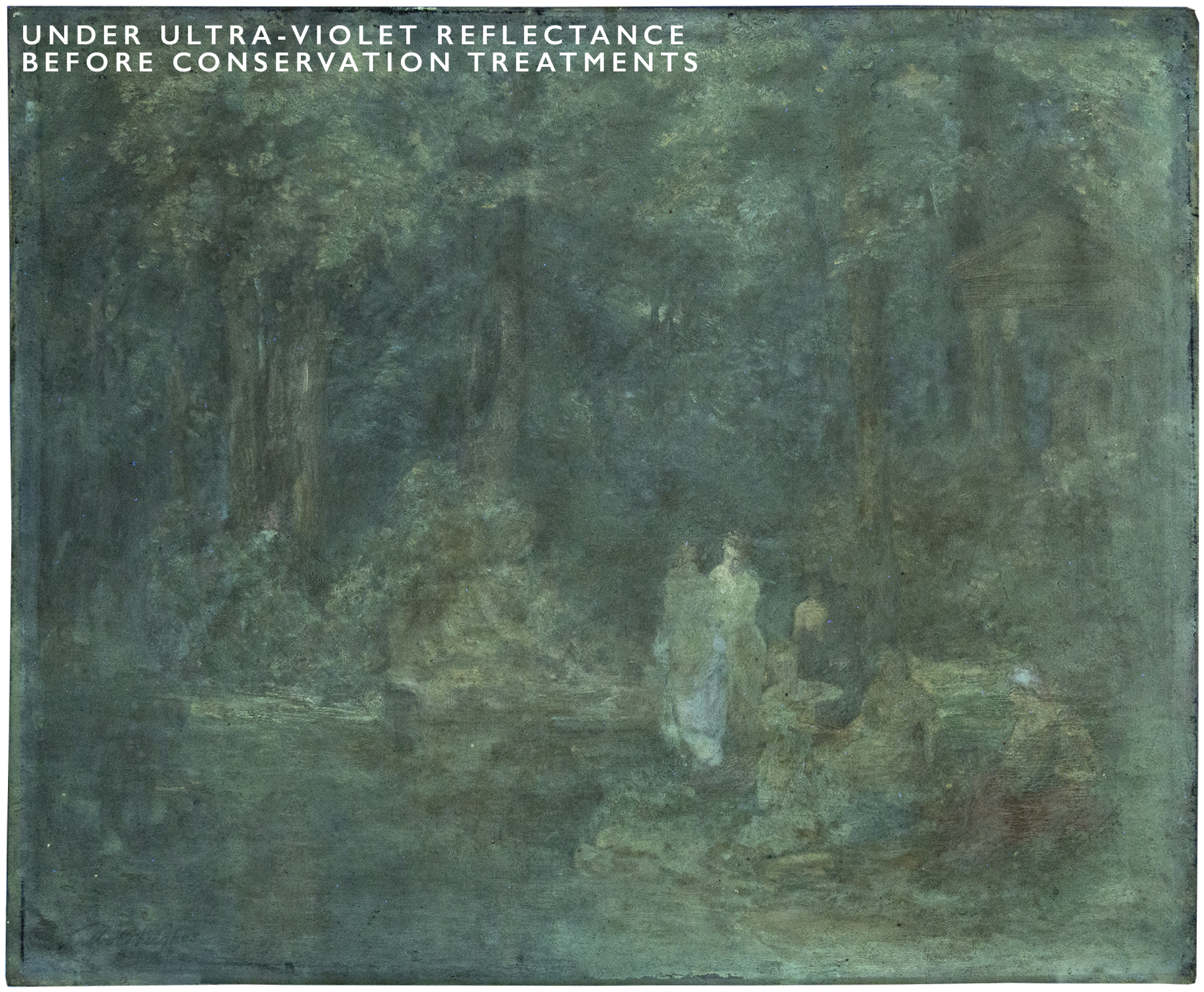
Before treatment began, the photograph of this painting taken with UV reflectance shows a green-yellow haze indicative of an aged natural resin varnish previously applied to the surface.
After the aged varnish was removed, the UV image shows more details. The photograph now shows an interesting fluorescence in the lighter pigment areas (particularly the figures) and absorption in some dark areas (such as the detail in the background hedges).
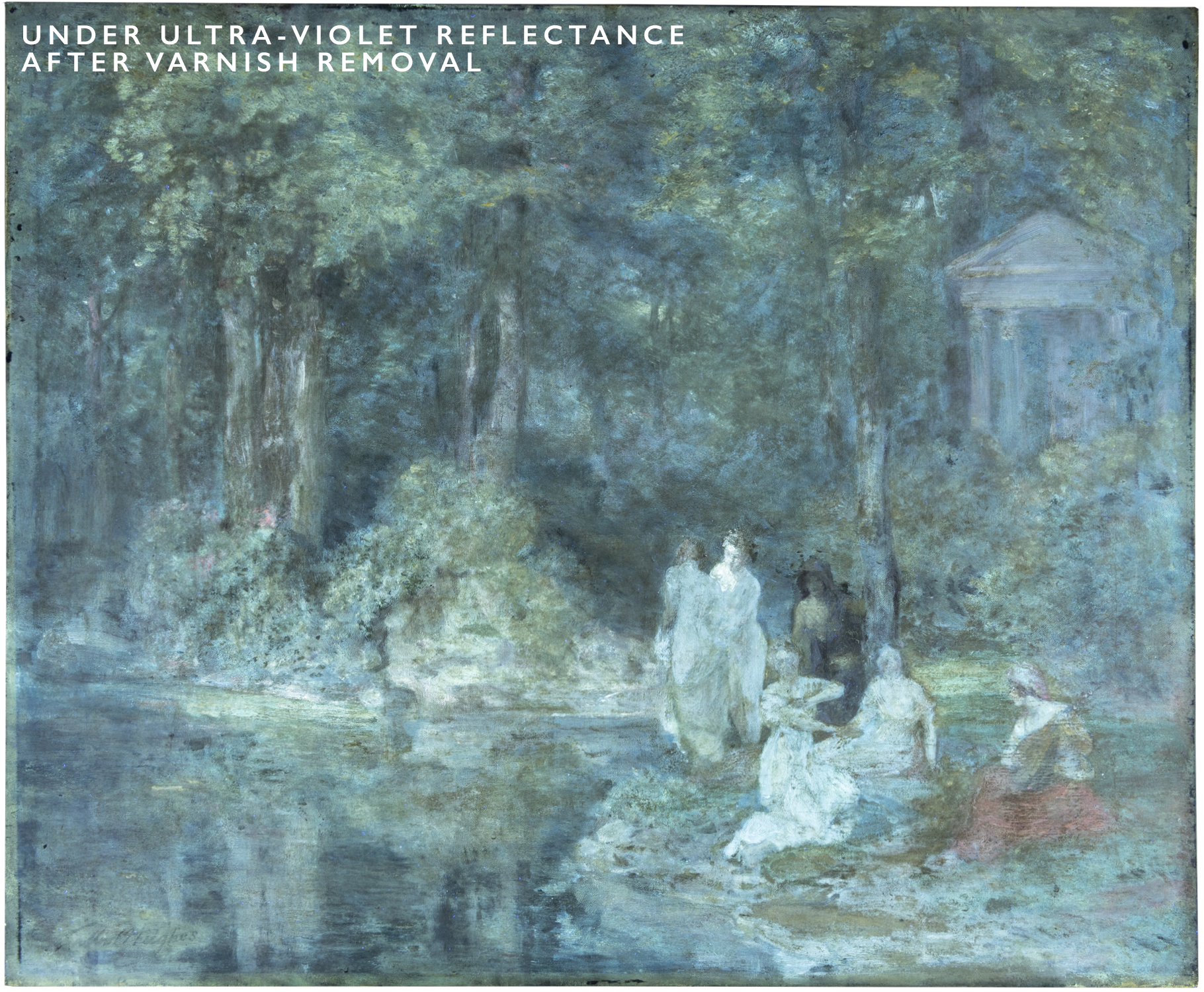
Some pigments exhibit fluorescence because of their complicated chemical structure. When the photon of light reaches the material, some of the energy can be absorbed. This causes the wavelength of the radiation reflected back to increase, making it visible to the human eye. We can see this under ultra-violet because UV is a shorter wavelength than visible light.
 Above: a detail from the painting following varnish removal displaying the fluorescent pigment
Above: a detail from the painting following varnish removal displaying the fluorescent pigment
The artist Talbot Hughes would have been working in an era when new and unusual pigments were becoming more frequently available. Our conservators considered that the fluorescence in this case may be owing to a use of resins within the paint media rather than the pigments used – these resinous paints are called megilps and were also common in Talbot Hughes’ time.
When the painting was complete, our team returned it to its original frame – this had also been restored by our experts, ensuring it was stable and free of contaminants. Our client had only two words to describe the result – “Absolutely Wonderful”.
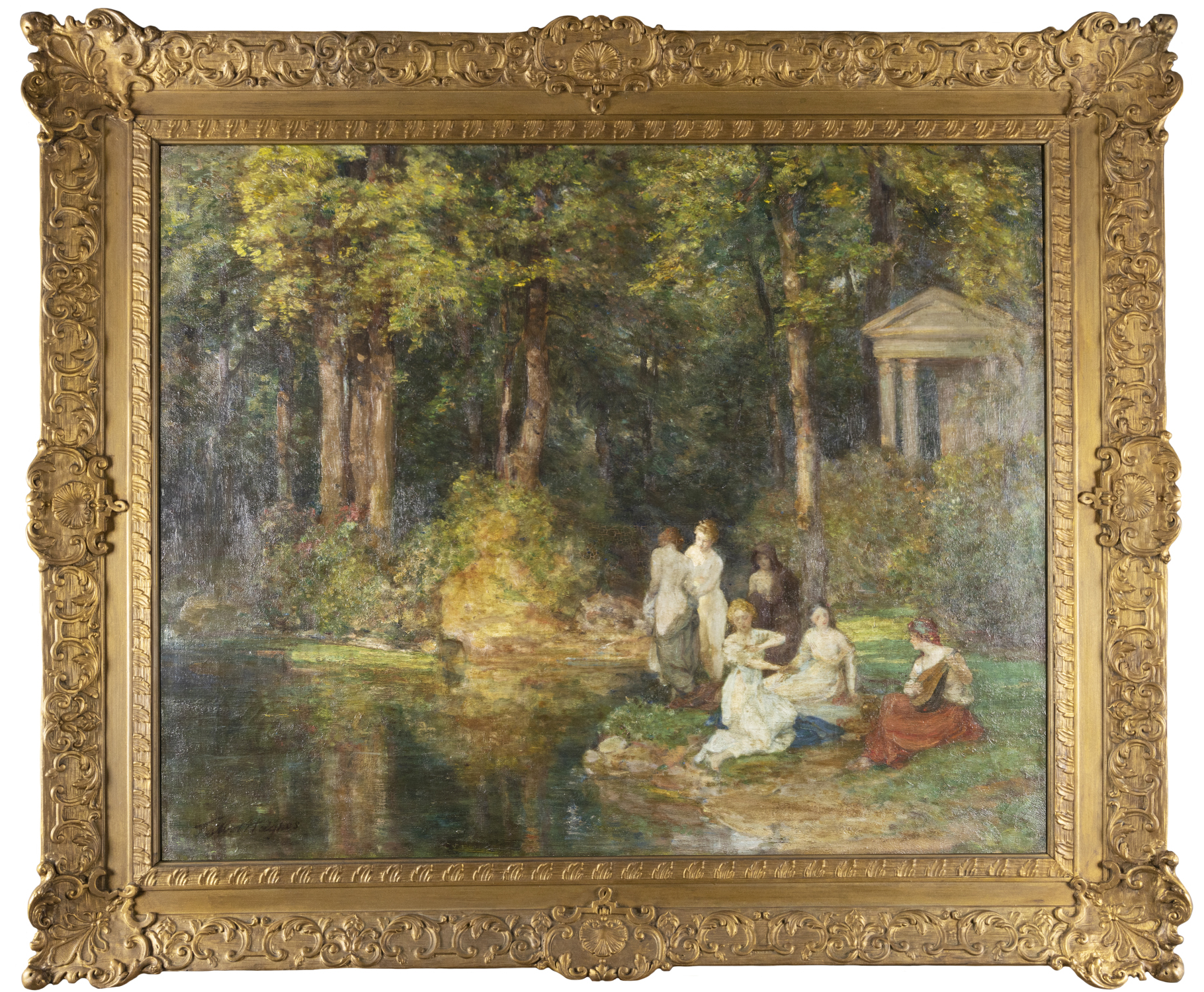
How can we help?
If you have a painting that has darkened due to fireplace smoke, or have a piece that you would like to be investigated through professional conservation analysis, please get in touch with our helpful team.
To make contact please email us via [email protected] or call 0207 112 7576

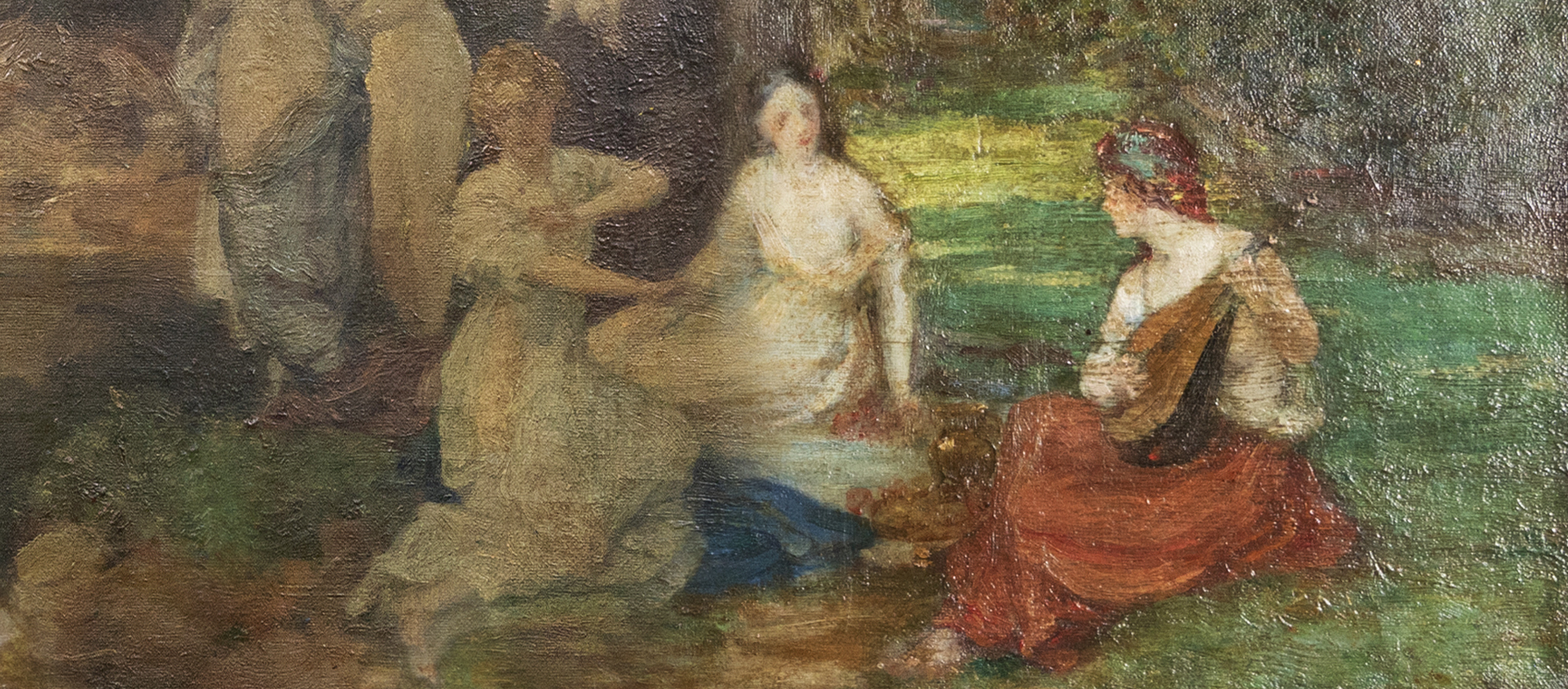 Above: a detail from the painting before and after surface cleaning and varnish removal
Above: a detail from the painting before and after surface cleaning and varnish removal Above: the signature of Talbot Hughes before and after restoration
Above: the signature of Talbot Hughes before and after restoration Above: the full painting before and after conservation treatments by our conservator
Above: the full painting before and after conservation treatments by our conservator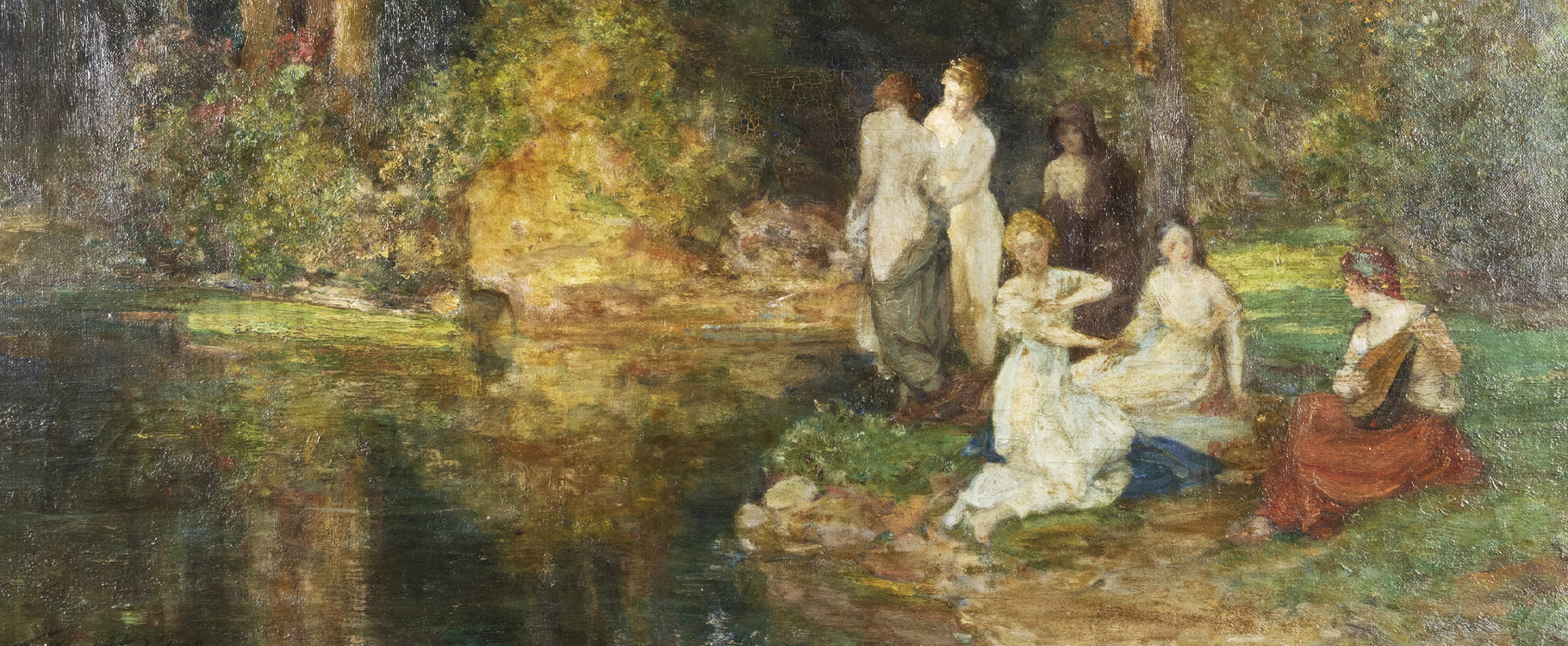 Above: a detail from the painting following restoration work
Above: a detail from the painting following restoration work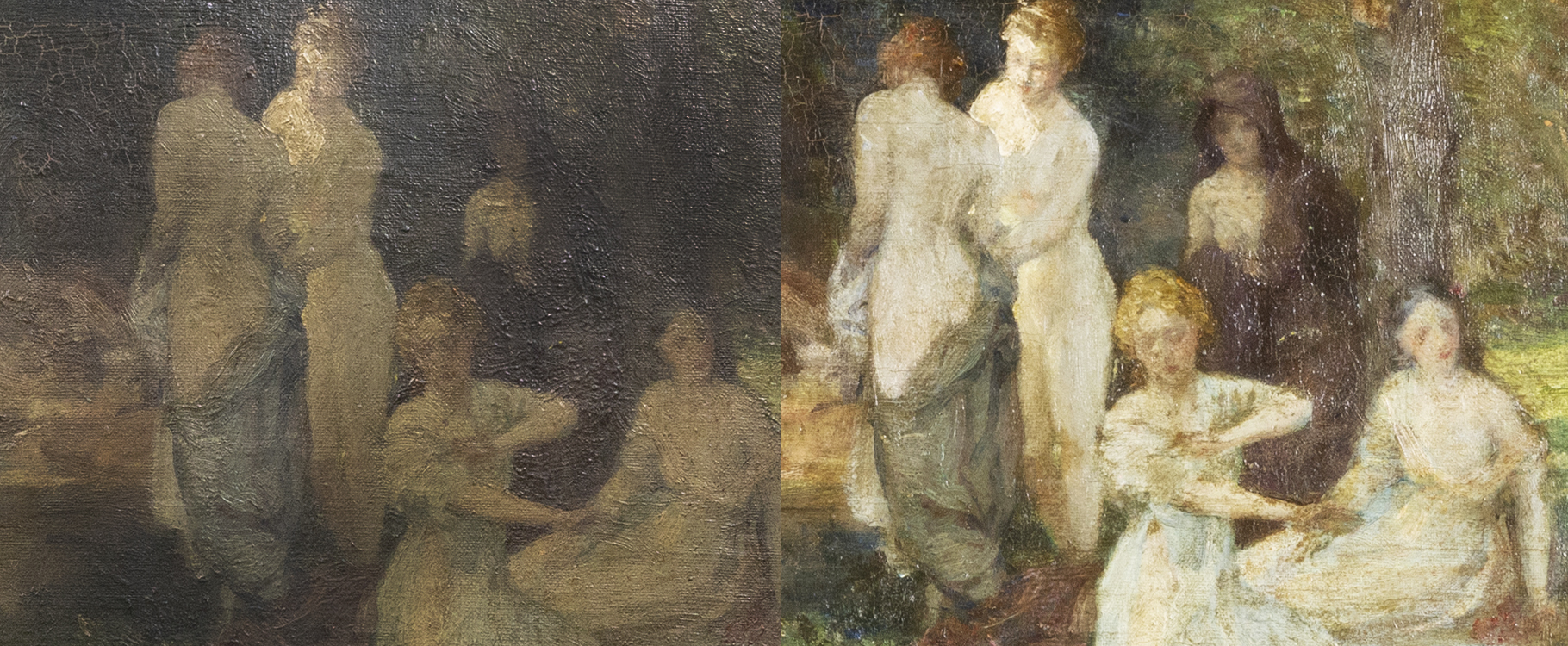 Above: a detail of the figures before and after restoration by our conservator
Above: a detail of the figures before and after restoration by our conservator Above: a detail from the painting following varnish removal displaying the fluorescent pigment
Above: a detail from the painting following varnish removal displaying the fluorescent pigment




